Orichalcum is an exploration tile placement action drafting race game with a Greek mythology theme. This is a strategic family weight game that can be enjoyed by so many people due to the ease of rules, the lovely art, and the blend of mechanics that keeps bringing the game to my table over and over again. Orichalcum is for 2-4 players and takes less than an hour to play. The game is published by Catch Up Games in France and published in the USA by Pandasaurus Games, which is known for Brew, The Loop, Machi Koro 2, and is in the process of releasing The Fox Experiment, and The Wolves.
What’s in the Box?
- 4 Island Boards
- 1 Construction Board
- 1 Actions Board
- 17 Victory Tokens
- 17 Temple Tiles
- 4 Titan Tiles
- 12 Action Cards
- 65 Terrain Tiles
- 4 Metropolis Tiles
- 20 Creature Pawns
- 26 Building Tokens
- 4 Combat Dice
- 30 Hoplites
- 30 Orichalcum Nuggets
- 1 Initiative Pawn
- 1 Creatures Bag
- 1 Buildings Bag
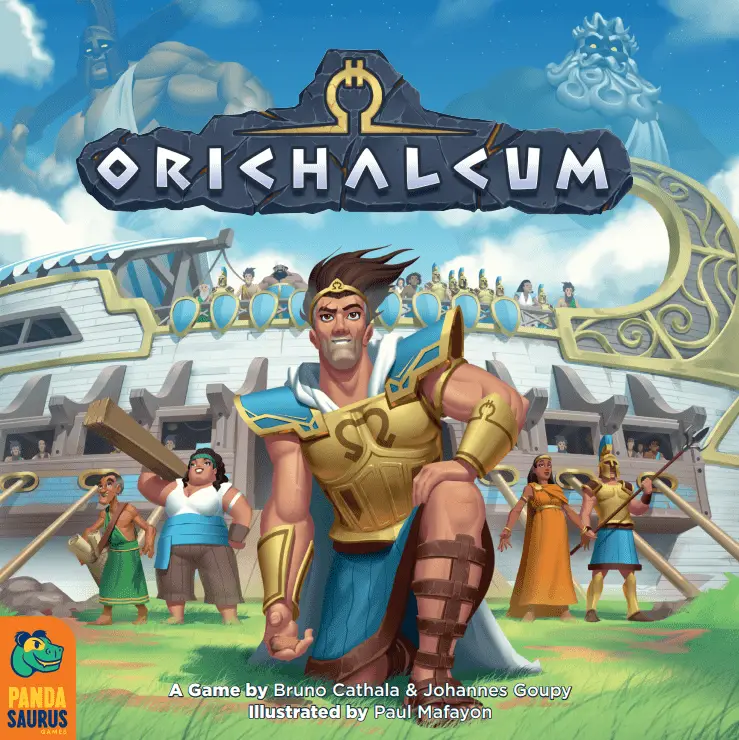
How’s it Play?
This is a race against all other players to collect 5 victory points that will be slotted above their board. The first to get 5 points wins the game. Players take turns choosing a card on the action board. Some cards require an extra cost of hoplites shown on their spaces. Each card comes with a tile and an action shown on the card. Some tiles also come with a creature pawn, which is placed on the volcano terrain spaces.

After choosing a card, you place your tile on your board connecting to a tile already placed on the board. Orientation of your tiles is important because if you connect 3 circles worth of the same type or terrain, you gain the Titan matching the terrain type. A player can only hold one Titan at a time, it grants a special action and when used, you flip over the Titan tile. These Titan tiles are placed above your board and count as a point, but they can be taken away when another player gets 3 of the same type of terrain tiles on their board.
In addition, you also want to place your terrain tiles in a way where 4 different types are in the pattern matching a temple, so you can place a temple on top and gain a victory point doing so. There are 4 main types of terrain. After defeating a creature, a volcano terrain area is left, and this counts as wild and can be any type of terrain.
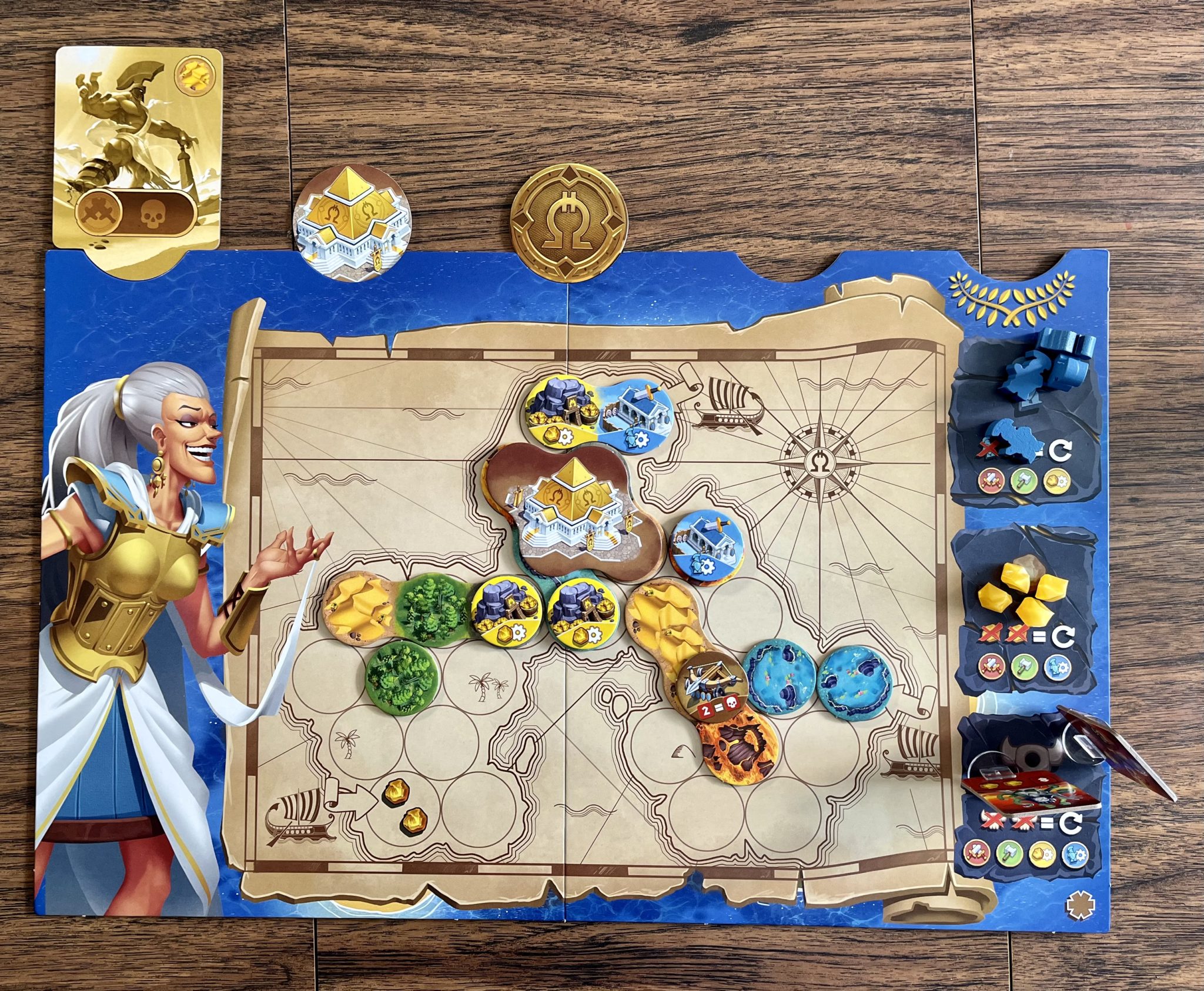
There are 4 main actions:
- Produce Orichalcum – You count how many mines you have on your board and collect that many nuggets.
- Recruit Hoplites – You count how many training camps you have on your board and collect that many hoplites.
- Capture Creatures – You roll 1 die plus 1 more die per hoplite you assign to go to battle. You roll your dice and if the number is greater than the creature, you defeat it. Or if you roll a skull you automatically win. You gain its listed bonus and place the creature on your board to use to gain extra actions later in the game.
- Construct – You visit the building board and gain one of the buildings on it to place it on your board on top of a specific terrain type listed. These buildings can give some cool abilities that others don’t have and should be used toward your strategy. If you don’t want a building, you can instead construct a temple by placing it on the specified terrain pattern. Or you can pay 5 orichalcum to gain a victory token.
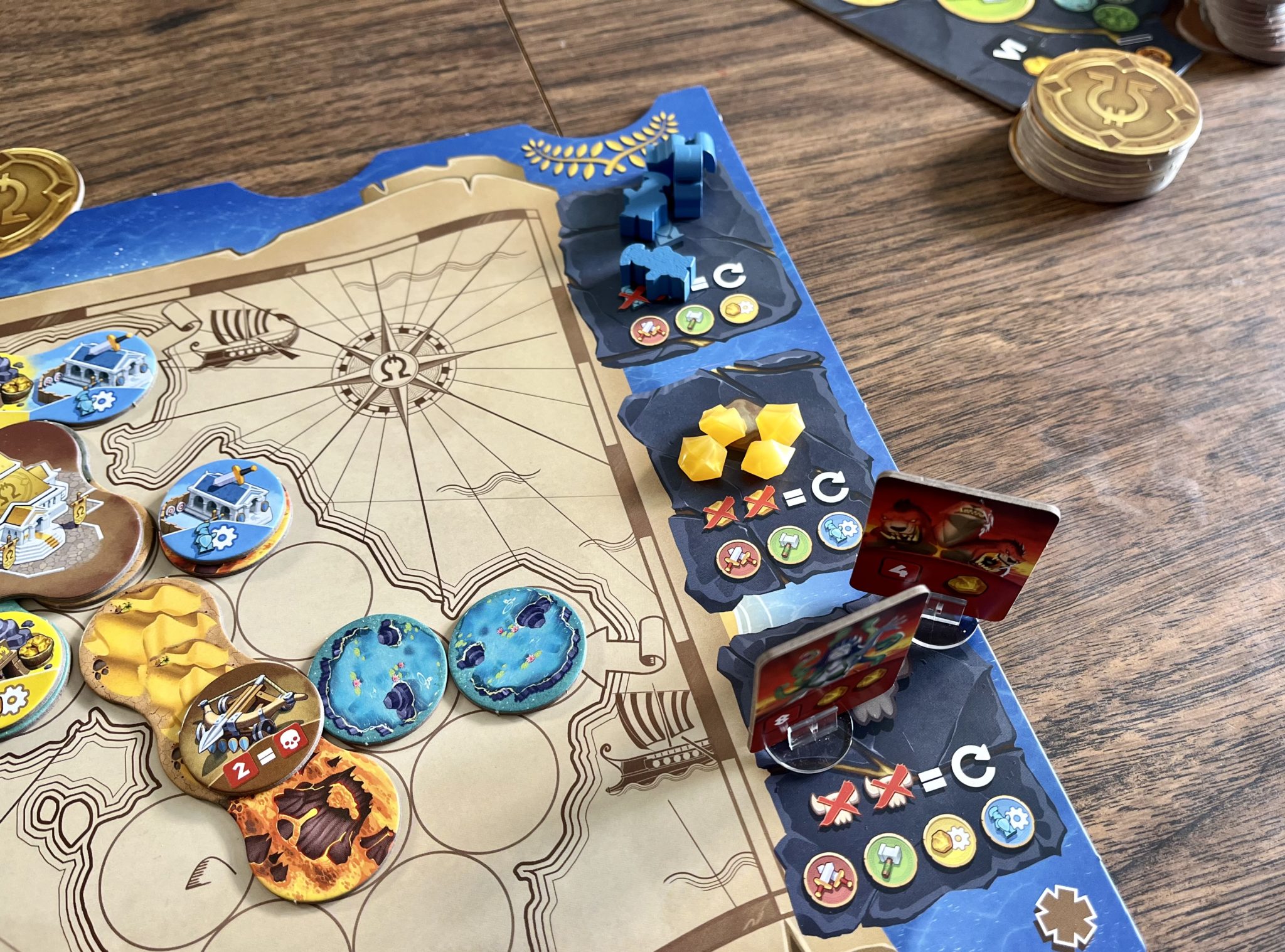
Just remember that you will need to plan what terrain types you want to use for buildings and for constructing a temple. Constructing a temple gives you a point in the game. If you place a building on a terrain tile, you can no longer use it for constructing a temple.
After you do your action you can perform an additional action by spending 2 hoplites, 2 orichalcum, or 2 captured creatures.
You then use your turn and actions to build up and gain effects to get points by paying orichalcum to get a victory token, by building a temple, or gaining Titans. The first player to get 5 points consisting of those options, wins the game.
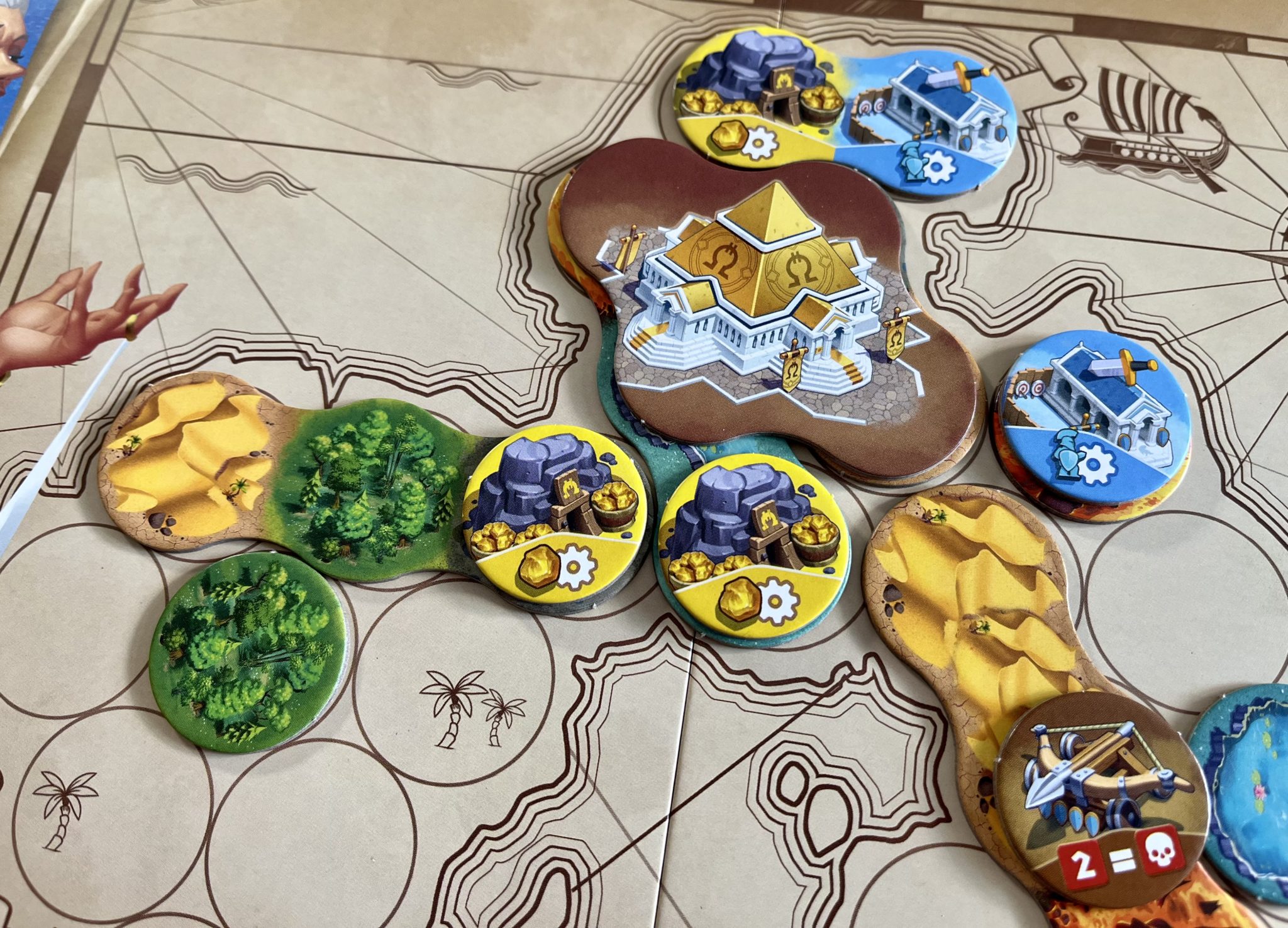
The Verdict
Orichalcum has been one of the biggest surprises for me in a long time, in a good way. The game is pretty straightforward and you know your goal and the things you can do to gain victory points— that’s all pretty straightforward. The buildings that grant you extra abilities and the rewards that you might receive for defeating some of the creatures aren’t obvious as to how they can benefit you as you play. But as you play the game and see how some of these bonuses can really give a player a leg up in the game. These bonuses also require that player to focus on those abilities, and will reward them with victory points quicker, if they change their strategy to include and use those abilities.
I really like how there are cards to reveal what action you take, and then there are set sizes of tiles to be placed on top of the cards that can be random tiles of different terrain types. This guarantees variability and if a player is really looking for a certain type, other players can decide to take that tile before they can get it. But it’s not terribly hard to get the terrain type you need because the volcanos include a monster or enemy, but after defeating it, that terrain is wild. The wilds are good for building on, but to gain a Titan, you need to actually match 3 of the same type of terrain types together.
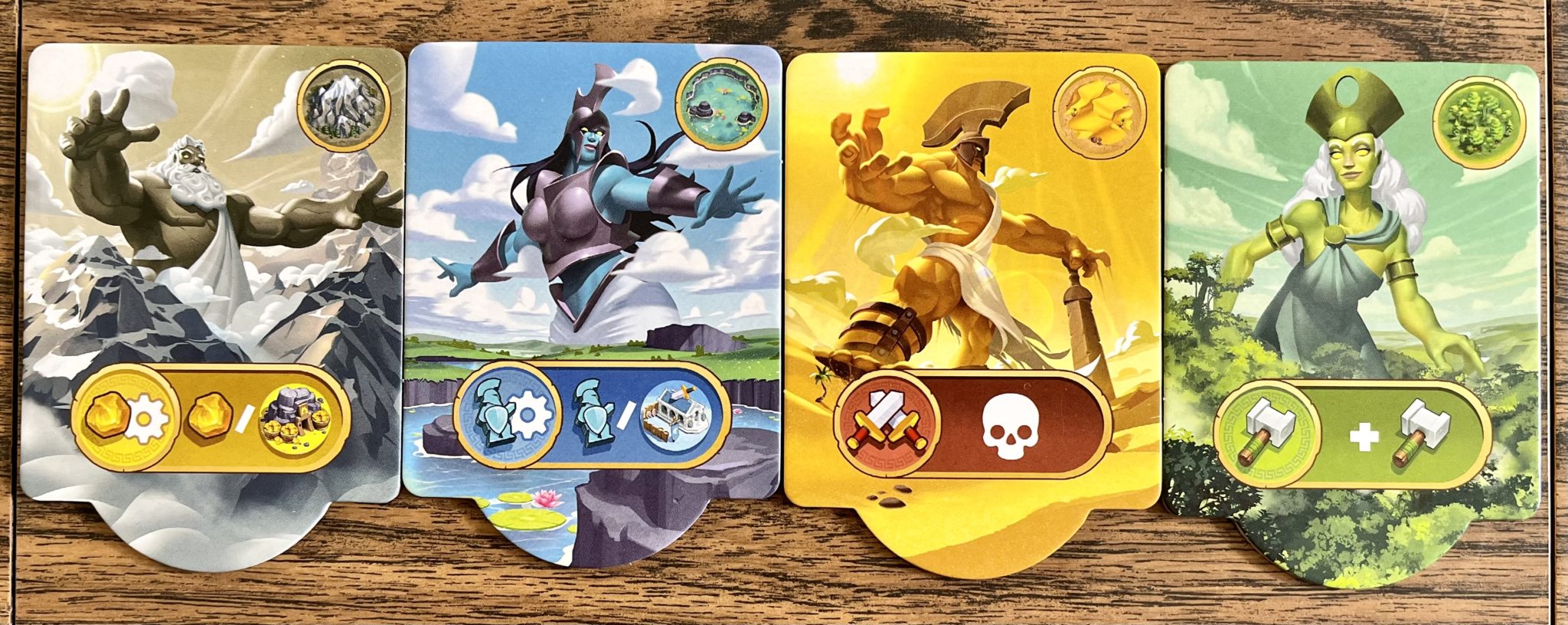
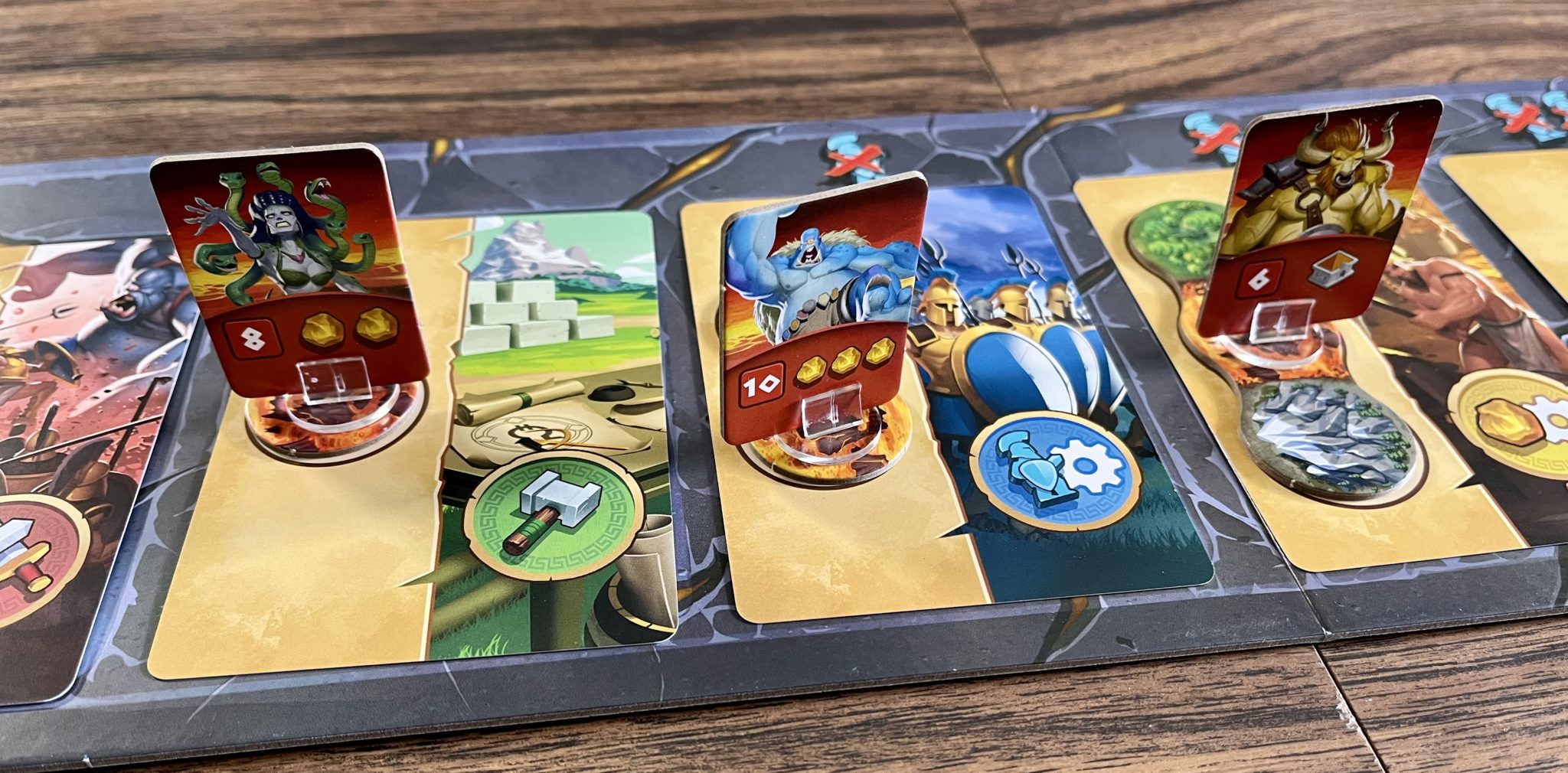
So you building out your tiles to try to make opportunities for building tiles to be placed on top, or for temples to be built, and also for Titans to be gained. There are a lot of things to think about when placing your tiles. Production is the other thing that can be focused on. You can increase your production of orichalcum and or hoplites. Making more orichalcum is a big focus for many players because if you can make more you can spend 5 orichalcum to gain a victory point. Makes sense. Hoplites on the other hand help when attacking, you can use them to take an extra action each round, and they make it easier to buy better tiles or actions you want that possibly wouldn’t be attainable.
The last focus is on Titans. Titans give you a powerful action to take and count as a victory point, but you normally can only have one Titan at a time, so you will need to expand on your strategy more than just gaining Titans. But there is a building that lets you have two Titans at a time, and that makes it possibly easier to get to that 5 victory points, but also gives you some powerful actions while you continue to apply that strategy.
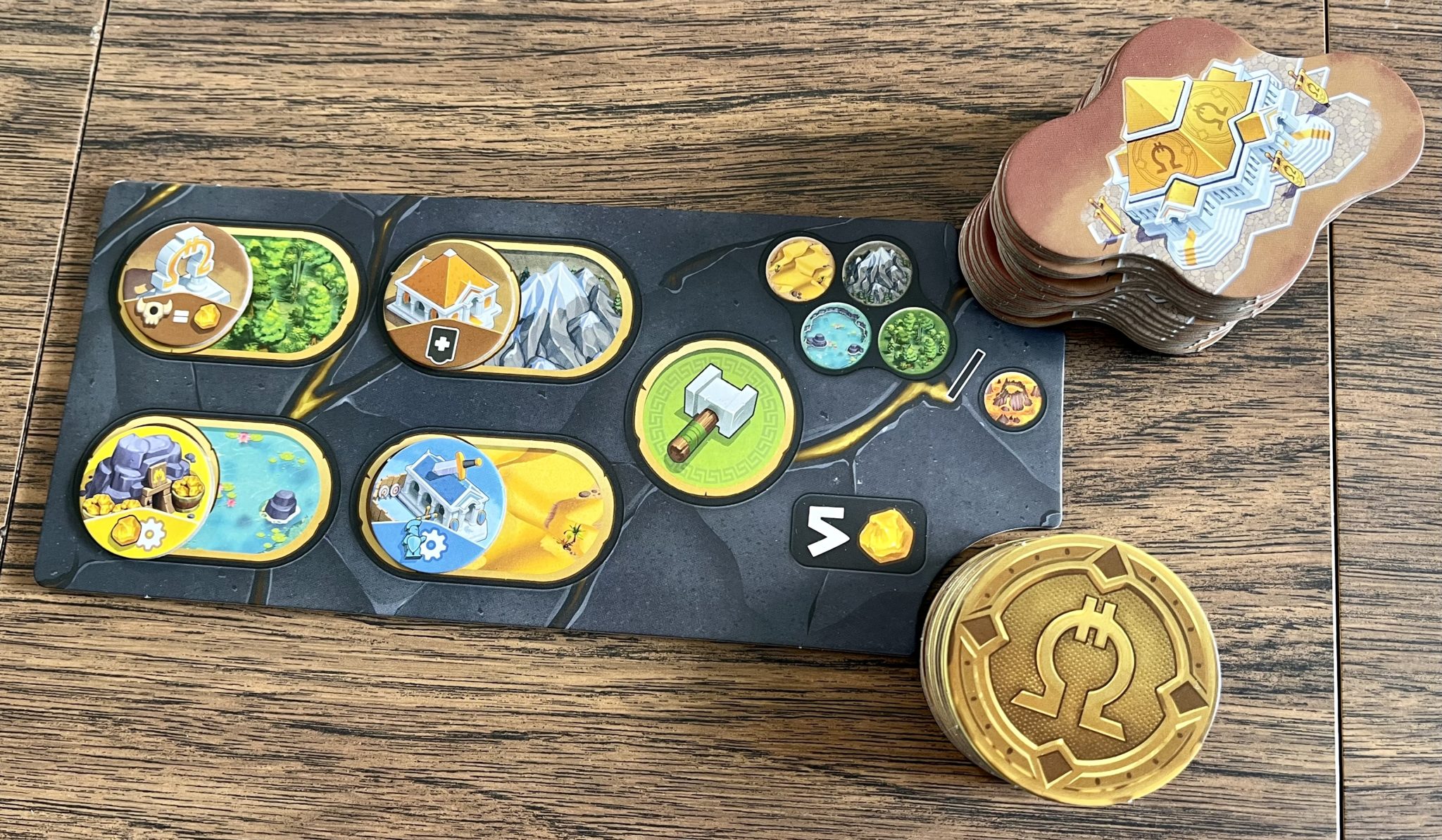
Orichalcum is always very close at the very end. Some strategies take longer to build up to but your points are more permanent, while others might get you points quicker, but another player can take a point or 2 away. Finding and choosing cards that have tiles you want and also actions you want to take is the key to this game. And if you have a strong path of doing a certain action each turn, then other players need to defend those from you and take them. This is or can be both an offensive and defensive type game.
Overall, Orichalcum is designed to be played relatively quickly. There are some decisions as to how you position your board to gain your victory points. Those strategies might focus on buildings that are available out on the building board or actions and tiles available on the action board. No creatures can be on your board to claim victory, so players near the end might not want to take tiles with creatures, as their choices might narrow, while others who aren’t worried about the creatures due to having lots of hoplites and potential ways to defeat them, and can benefit from taking them. Everyone in the game takes the same amount of turns, so players need to play efficiently and race to get 5 victory points before any other player does.
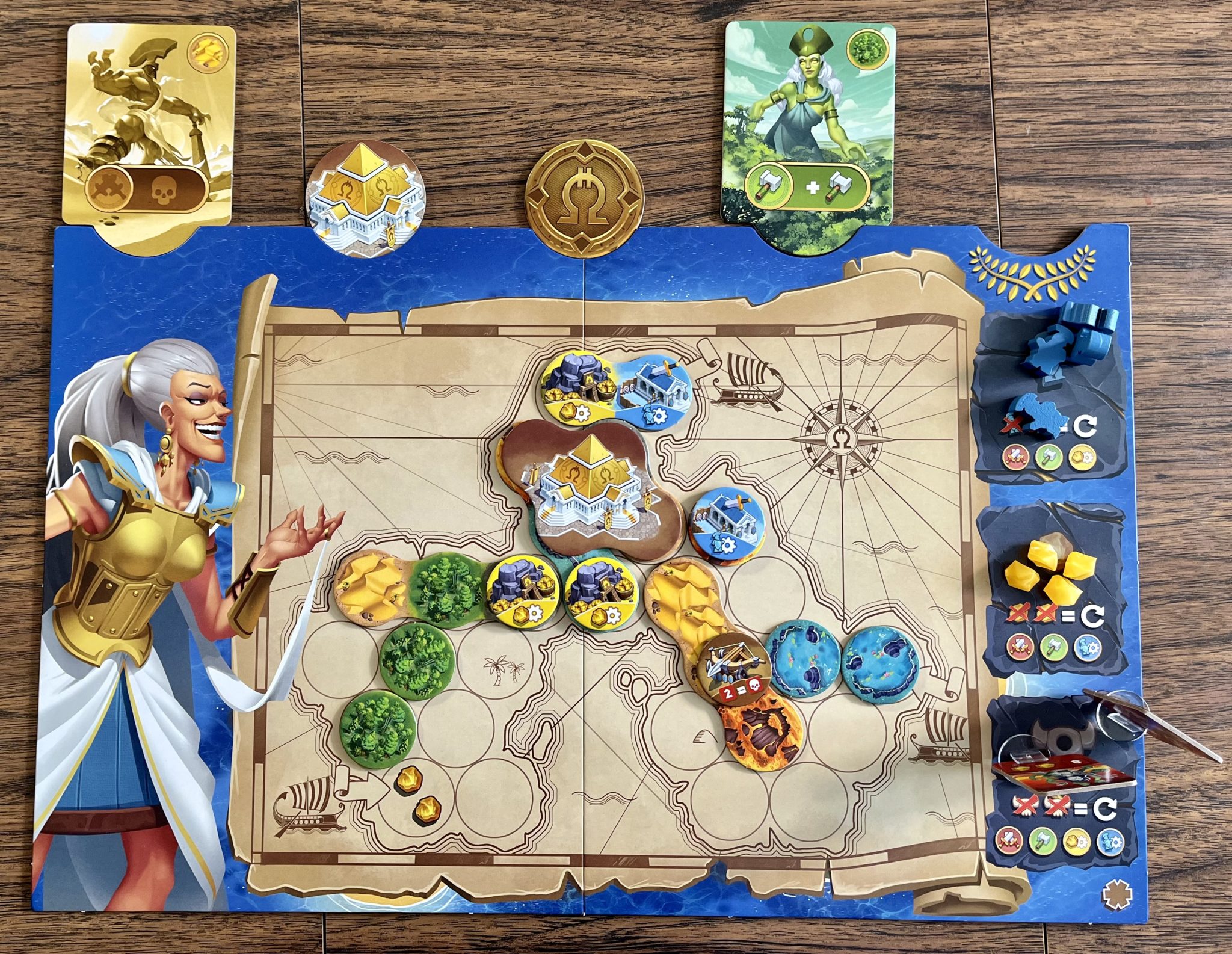
You can grab Orichalcum from the Pandasaurus shop, Miniature Market, or your FLGS at an MSRP of $49.99.
Images via Pandasaurus Games
Have strong thoughts about this piece you need to share? Or maybe there’s something else on your mind you’re wanting to talk about with fellow Fandomentals? Head on over to our Community server to join in the conversation!

